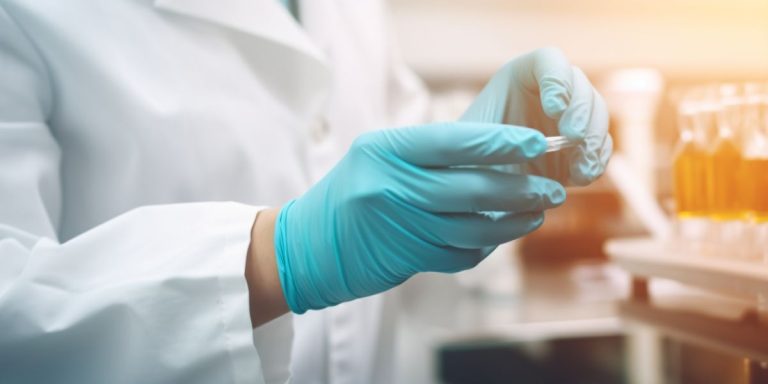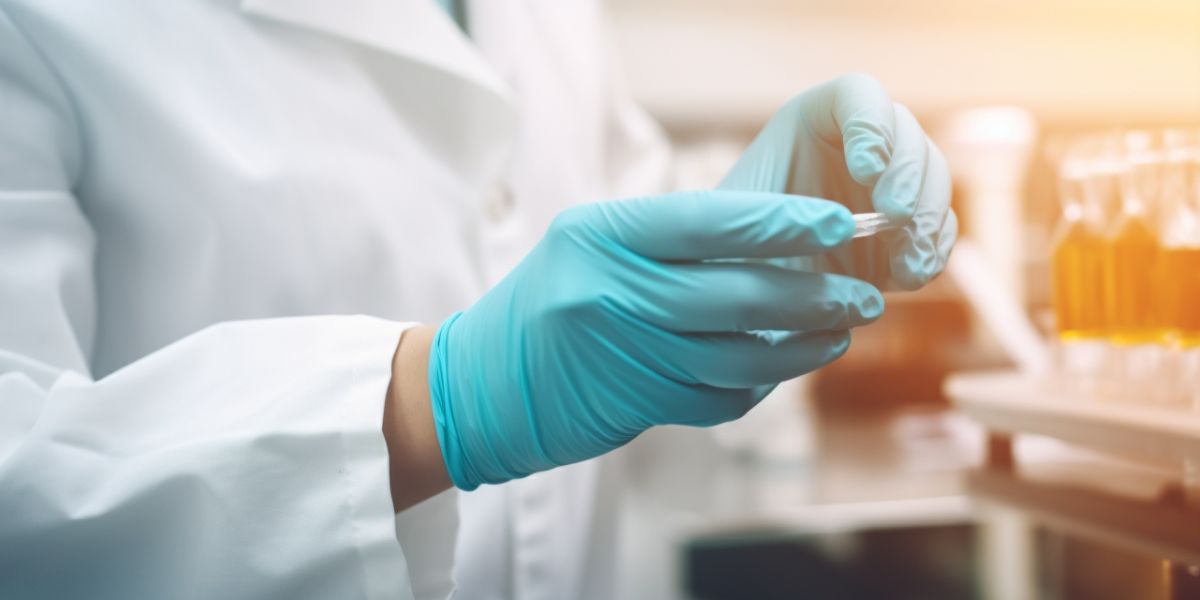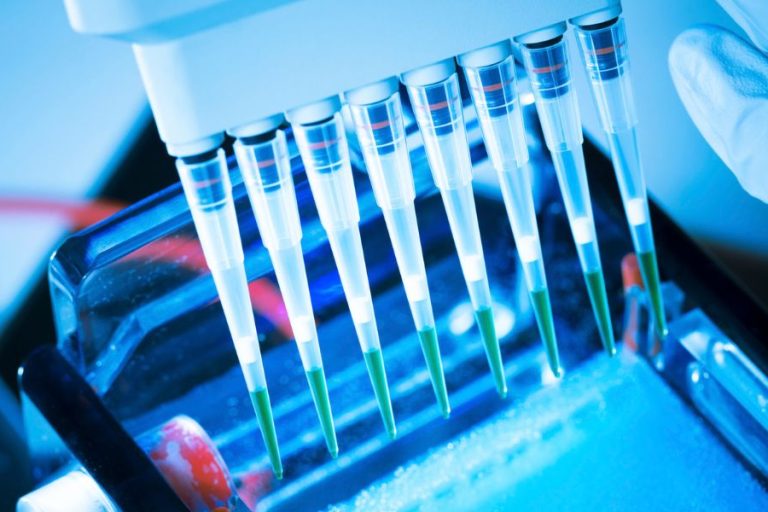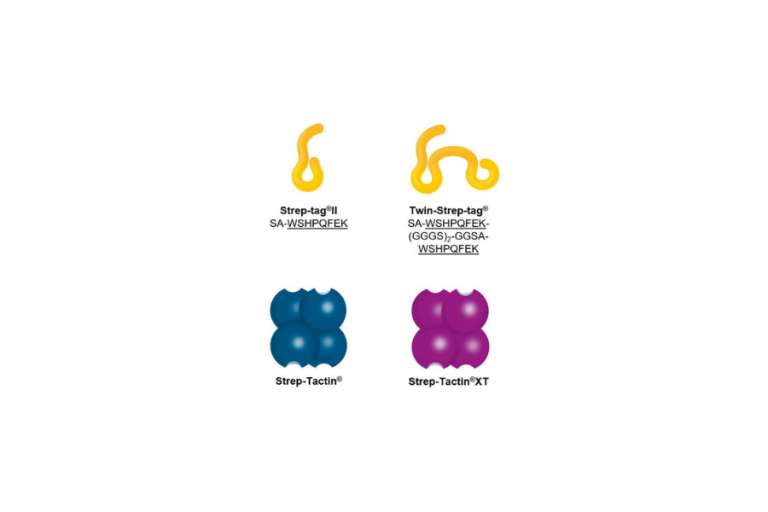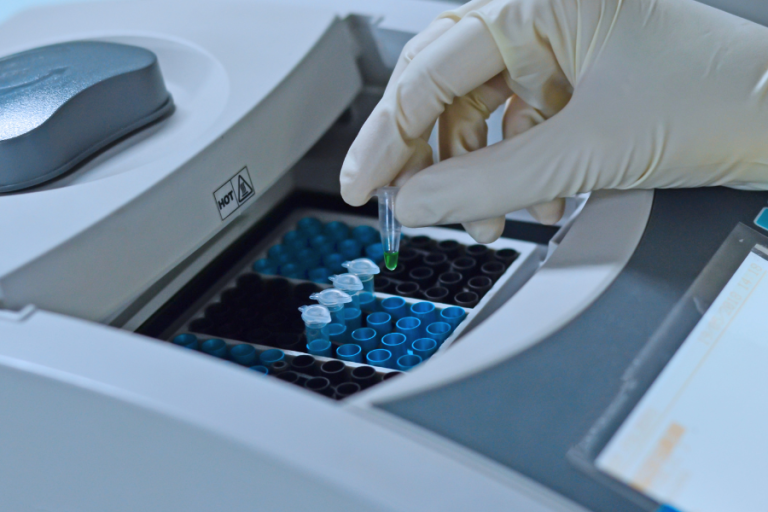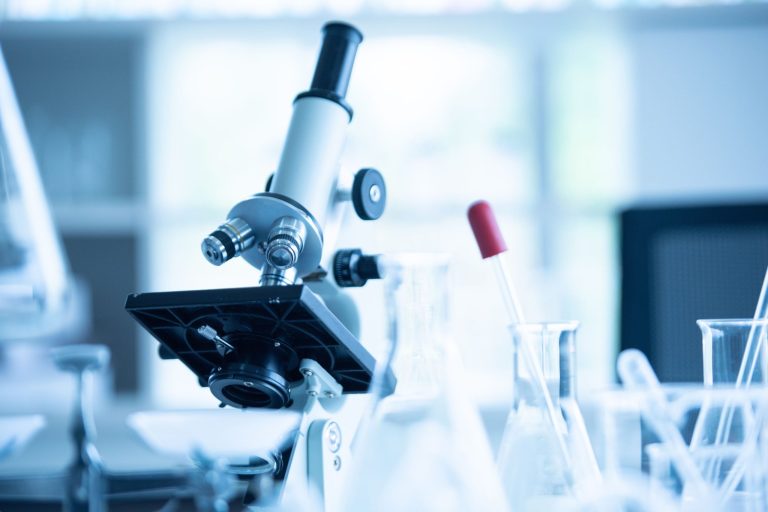PPE (personal protective equipment) is an essential element of working in any lab in Australia. Like any workplace, labs come with a range of hazards to workers. But with careful management and use of protective measures such as PPE, these risks can be well mitigated.
In this article, we’re going to take you through a variety of topics relevant to PPE and Australian requirements around it to give you a good understanding of why it is such a vital part of any lab environment.
Why PPE Is Important in a Lab
PPE such as gloves, eyewear, and lab coats offer an indispensable line of defence for anyone working within a laboratory environment, ensuring their safety and wellbeing.
PPE acts as a barrier against the various hazards present in lab work and helps reduce the risk of accidents and injuries involving workers.
It is also important in a lab because it minimises the risk of contamination. This helps to ensure that research and analysis is conducted to the highest standards and produce high quality results.
By rigorously adhering to the proper use of PPE in the laboratory, institutions foster a culture of safety and demonstrate a commitment to maintaining the highest standards in scientific research.
Common Lab Hazards That Warrant PPE
Laboratories are vital to scientific research and innovation, but they are also home to a variety of hazards, making PPE essential.
Common lab hazards will mostly fall into these categories: hazards linked to equipment, hazards linked to gases, hazards linked to chemicals and hazards linked to biological matter.
Hazards Linked to Equipment
Because many items of lab equipment require electricity to power them, such as centrifuges, electrical hazards may pose a risk.
Thermal hazards also fall under this category. Furnaces, ovens, and other lab heating equipment by necessity work at high temperatures, posing the potential risk of fires or burns.
Mechanical hazards include risks around glassware, such as glass test tubes. If these break, cuts and wounds may be sustained.
Radiation hazards can be produced by certain imaging machinery in labs, such as x-ray equipment, posing the risk of injury to the skin or deep inside the body at DNA level.
Hazards Linked to Gases
Gases used in a lab environment, such as chlorine and carbon monoxide, can be highly toxic to workers. Carbon monoxide poisoning, for example, can result in brain damage. Other gases like ammonia and sulphur dioxide are corrosive. If used incorrectly, they can cause burns to the skin and respiratory issues.
Some gases used in the lab, including methane and hydrogen, are highly flammable. If they are incorrectly handled, they may ignite, leading to burns. There is also the risk of explosion of volatile gases like nitrous oxide and oxygen if exposed to certain substances or heat. The results can be catastrophic to lab workers.
Hazards Linked to Chemicals
If used incorrectly, chemicals commonly used in labs, such as sulphuric acid, hydrogen peroxide, and ethanol, can cause significant injuries. These include chemical burns, which may be at superficial level or may penetrate below skin level to the tissue.
Toxic fumes emitted from lab chemicals can lead to respiratory problems or even death. If the chemicals are reactive or explosive, fires or explosions may result, leading to serious injury.
Hazards Linked to Biological Matter
Common hazards linked to biological matter encompass a range of potential risks to human health and the environment. One prevalent example is the spread of infectious diseases through contact with contaminated biological matter, such as bacteria, viruses, and fungi.
Moreover, mishandling of biological samples or contaminated equipment can result in cross-contamination, compromising experimental integrity and potentially causing false results.
The Australian Regulations Surrounding PPE in Laboratories
We’ve already seen how important lab PPE is in keeping workers safe. That’s why organisations must adhere to stringent laboratory PPE requirements to ensure that PPE is used appropriately and correctly.
Safe Work Australia explains that, in accordance with model WHS (work health and safety) laws, a person conducting a business or undertaking (PCBU) must provide workers with PPE free of charge, unless it has already been supplied by another PCBU.
PCBUs have the following obligations with regard to PPE:
- To choose appropriate PPE for workers and tasks that offer a reasonable degree of comfort.
- To provide instruction and training to workers and visitors in the correct use of PPE.
- To guide workers and other individuals to use PPE correctly.
- To regularly assess whether the PPE used is still effective.
- To display signage about PPE.
When choosing PPE for their lab employees, PCBUs must ensure:
- It protects workers’ health and safety.
- It is the correct choice for the type of work and the hazards the work poses.
- It fits comfortably and properly.
- It works with other PPE worn — for example, PCBUs must choose hearing protection that can be worn in combination with a hard hat if required.
PCBUs must also make sure that workers who use PPE should:
- Wear and use it properly.
- Not damage or misuse it.
- Communicate any issues with their PPE to a person with responsibility. The PCBU is obligated to resolve these issues.
What’s more, it’s important to understand the PPE is regulated by the TGA (Therapeutic Goods Administration) under the Therapeutic Goods Act 1989. This act sets out the legal requirements for manufacture, supply, import, and export of therapeutic goods (including PPE, which is categorised as ‘medical devices’) in Australia.
This helps to ensure that PPE in laboratory situations is of high quality, safe, and effective, mitigating risks to workers and promoting a safe workplace where research can thrive without compromising safety.
Types of PPE For Laboratory Workers
There are many types of PPE available to help protect lab workers and maintain an efficient working environment. These include:
- Eye protection, including safety visors, safety glasses, and goggles to protect against splashes and debris.
- Lab coats, which are resistant to fire, chemical, or other spills and biological contaminants.
- Aprons, usually made of rubber or plastic and worn over other garments such as lab coats to provide extra protection from hazardous substances.
- Hand protection, in the form of rubber, vinyl, nitrile, or latex gloves.
- Respirators to provide protection against inhaling vapours, fumes, or dust. These include dust masks, half-face respirators, full-face respirators, and powered air-purifying respirators.
In a broader sense, some items of lab equipment — for example, biosafety cabinets or air purifiers — are also often regarded as a form of PPE since they provide protection to workers from a range of hazards.
PPE Usage and Maintenance
Proper use and maintenance of PPE are pivotal in ensuring the safety and wellbeing of researchers within Australian laboratories. Model WHS laws set out standards for the usage and maintenance of PPE laboratory equipment.
They can be summarised as follows:
- PPE should only be used for the purpose it was made for.
- It should be inspected regularly for damage or any other issues.
- It should be inspected regularly. If it is worn, broken, or damaged, the wearer should report this to their PCBU, who must provide a repair or replacement.
- Expired or worn PPE should be replaced.
- PPE should be cleaned after use and stored appropriately.
Safety and Quality First When it Comes To Groundbreaking Research
Stringent requirements around PPE use and maintenance in the lab are essential to ensure a secure and efficient workplace.
Safety and quality should always come first, whether you are choosing PPE for your workplace or looking for other products to help enable your vital work.
As leaders in life sciences research solutions, whether you are seeking biosafety cabinets to enhance the safety of your operations or more specialised tools, such as DNA extraction kits, you can count on FB Australia to supply all your needs. Don’t hesitate to reach out to our friendly team to learn how we can best assist you.
